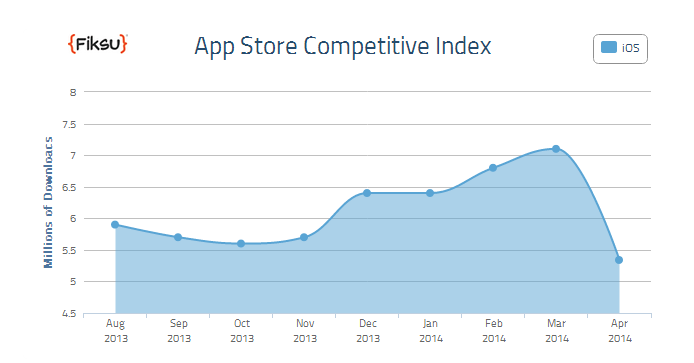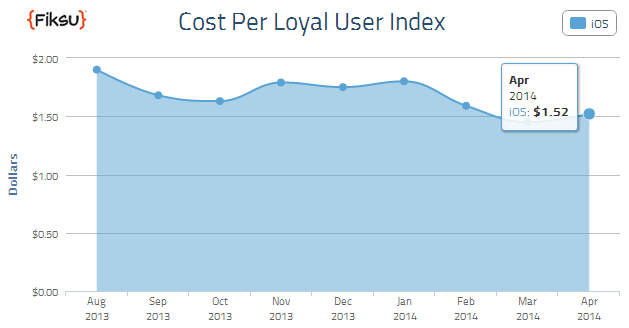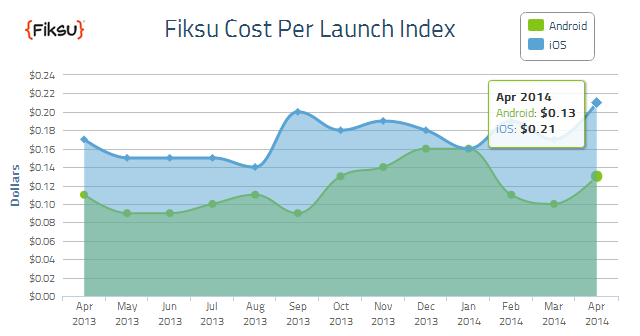If in March, American users downloaded about 7.1 million applications, then a month later this figure fell to 5.34 million, according to the analytical company Fiksu in a report for last April.
App Store Competitiveness Index (iPhone US)The competitiveness index reflects the total number of daily downloads of Top 200 applications.
In this case, we are talking about daily downloads from the American App Store.
And what do we see – a drop of 25% in a single month!
If in March, about 7.1 million applications were downloaded per day, then in April – 5.34 million. This is even less than in April last year.
Fiksu says that you should not worry. It’s not about objective indicators, but the fact that the company does not cover the entire spectrum of downloads. Therefore, when distributing them among a large number of programs, there may be a failure.
The cost of a loyal user (iPhone US)At the same time, the cost of a loyal user (the one who logged into the app three or more times) in April increased by 5% and amounted to $ 1.52.
The cost of each download is CPI (App Store and Google Play US)Along with the cost of a loyal user in the United States, the cost of downloading the application has also increased on both platforms.
Moreover, for the first time in a long time, the dynamics of both stores began to coincide. By the way, yes, the CPI on Android is now more expensive in America than the same for the App Store ($1.31 versus $1.24).
The cost of each launch is CPALThe Cost per App Launch index tracks the cost of each launch of an installed application.
When calculating it, Fiksu focuses on the level of engagement and LTV of mobile users.
CPAL also grew in April: by 20% for iOS ($0.21), by 19% for Android ($0.13). It should be noted that since February of this year, there has also been a general dynamics for both platforms.
Among the many trends, Fiksu notes the following: small developers seek to acquire very high-quality users by conducting their user acquisition campaigns. This leads to their use of expensive traffic, which results in the growth of LTV metrics. At the same time, big brands are often focused on buying large volumes at a lower price.
A source: http://www.fiksu.com




